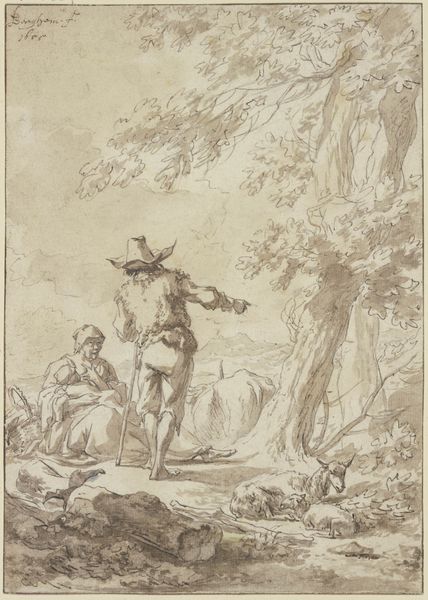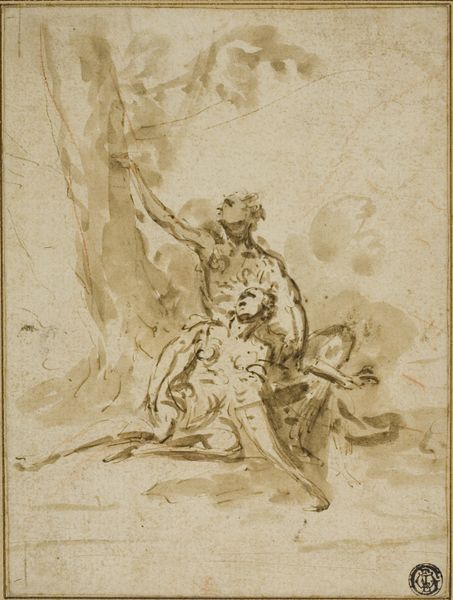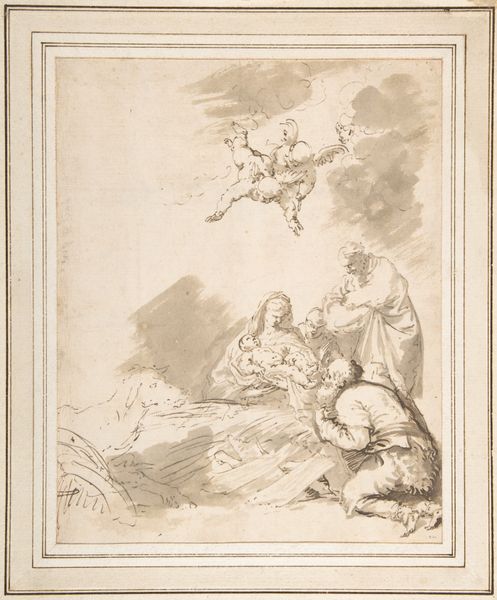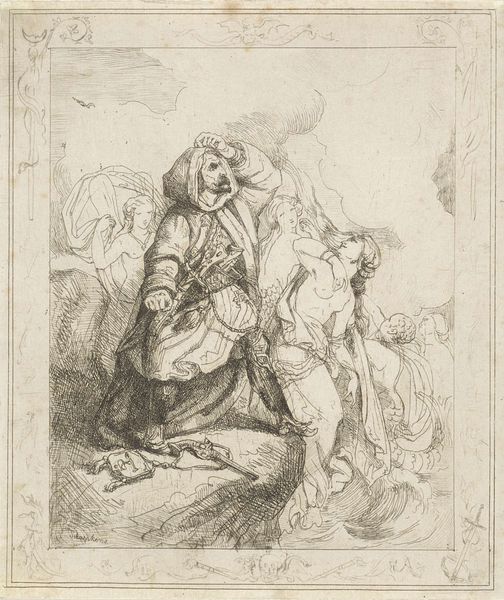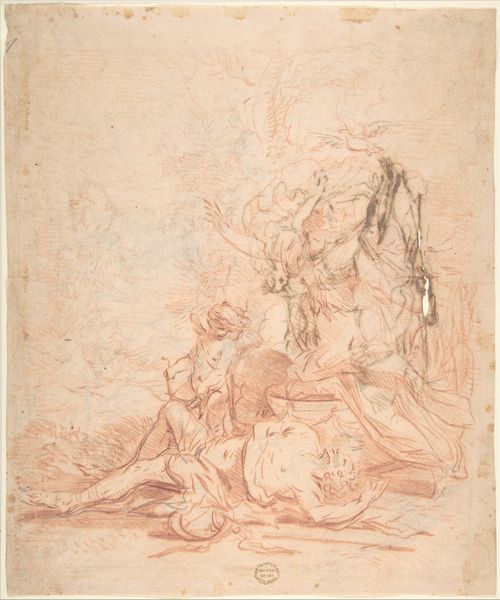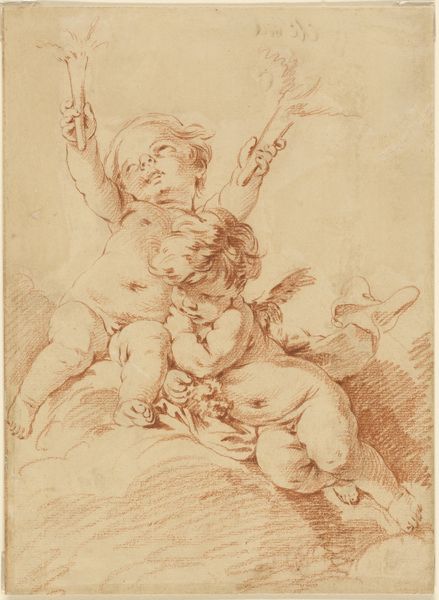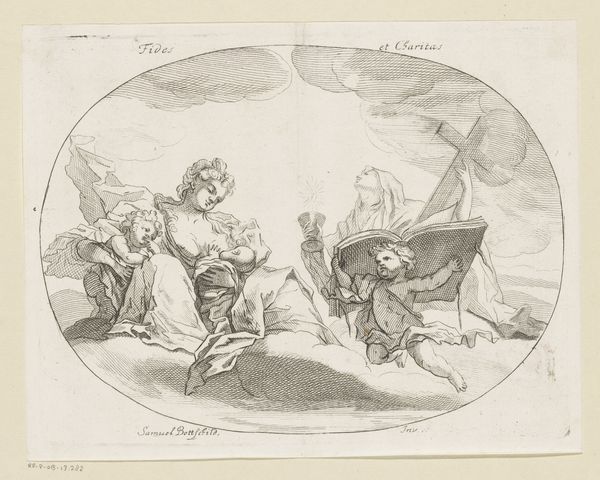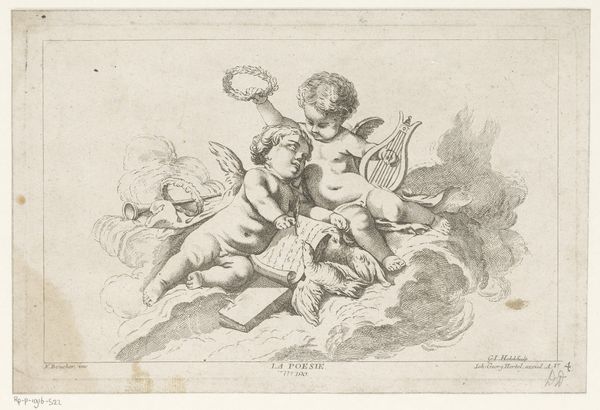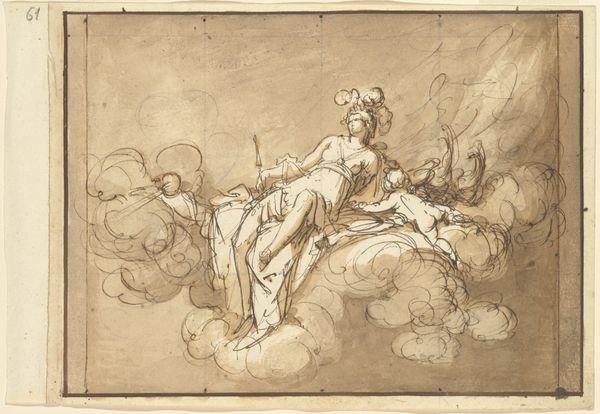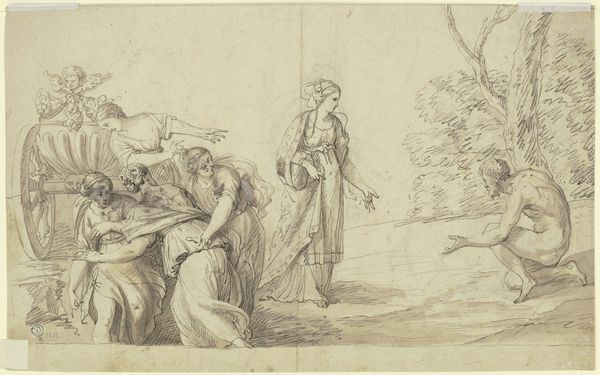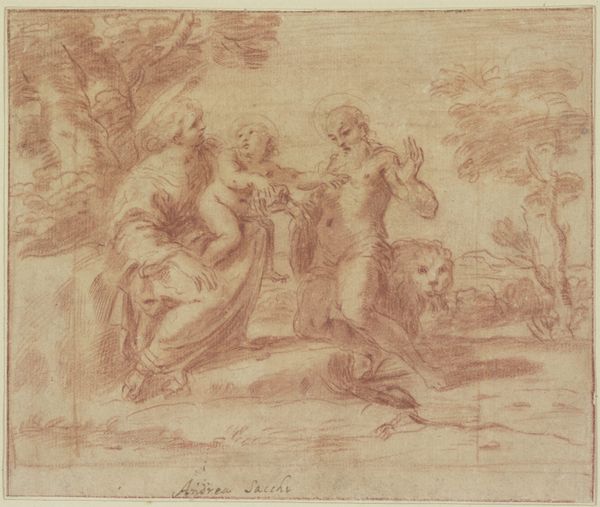
Dimensions: 7 13/16 x 6 1/16 in. (19.8 x 15.4 cm)
Copyright: Public Domain
Editor: Here we have an 18th-century pencil drawing entitled "Figures in a Landscape" by an anonymous artist. It feels very light and airy, almost like a fleeting dream. What structural elements stand out to you? Curator: The composition utilizes a subtle diagonal axis, anchoring the figures to the lower left and extending upwards towards the suggested mountainscape. Notice how the artist uses a limited tonal range, achieving depth through variations in line weight and density. The very lack of sharply defined forms invites closer inspection, forcing the eye to actively construct the image. Editor: That's interesting. I hadn't considered how much my own eye was doing to fill in the details. Curator: Exactly. What do you observe about the relationship between the figures themselves, purely from a formal perspective? Editor: Well, the lines seem to flow between them. The man's gesture seems to lead your eye to the woman’s seated pose. It's all very fluid, very interconnected. Curator: Precisely. And consider how that interplay of line and form affects the overall reading of the piece. Does the lack of clear narrative impede or enhance your engagement with the artwork? Editor: I think it enhances it. The ambiguity allows for multiple interpretations based purely on the visual elements, which is kind of cool. Curator: I agree. The artist's decision to prioritize formal relationships over narrative specificity creates a space for individual contemplation and appreciation of pure form. Editor: This close reading has really shifted my perception. I’m seeing elements I missed completely at first glance. Curator: And that is precisely the reward of engaging with a work of art on a formal level.
Comments
No comments
Be the first to comment and join the conversation on the ultimate creative platform.
